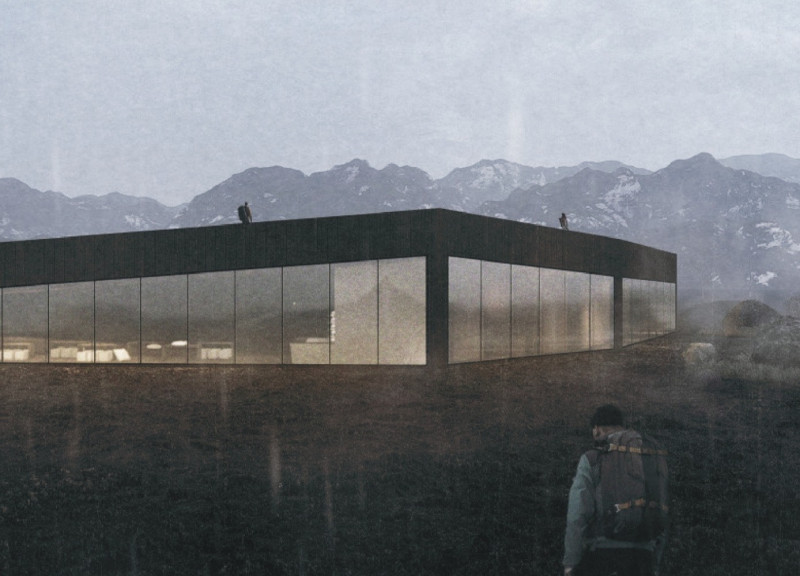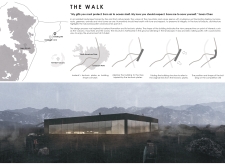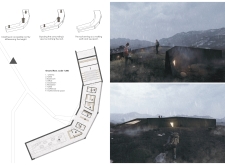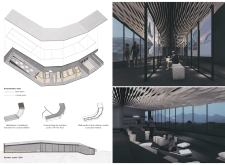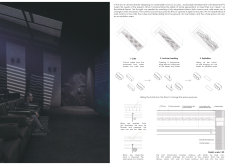5 key facts about this project
The Lago Mývatn Building Site is situated in the distinctive landscape of Iceland, defined by volcanic features and natural elements such as Grjótagjá Cave and Hverfjall Volcano. The design serves multiple purposes, including a cinema, café, and exhibition space, while closely connecting with the environment. The overall concept emphasizes a relationship between architecture and nature, using forms and materials that reflect the unique characteristics of the surrounding landscape.
Building Form and Integration
The design reflects the geological features of the region. The building’s shape closely follows the natural contours of the land. Its half-buried structure minimizes visual impact and enhances thermal performance. By blending into the landscape, the building promotes a dialogue between its built form and the natural world, creating a setting that feels unified rather than separate.
Circulation and Adaptability
Inside, clear pathways guide visitors through different areas, allowing for easy movement. This layout encourages exploration and interaction, which are important for community engagement. The interiors are adaptable and can change function based on needs. For example, the café can become an exhibition area, showcasing flexibility and a practical approach to design.
Sustainability and Materials
Sustainability informs the building’s design choices, particularly regarding material selection. The roof is made of EFTE, which is light and improves insulation while letting in natural light. Low-emission triple-glazing filled with argon enhances energy efficiency and ensures climate comfort. Concrete mixed with volcanic dust ties the structure to its environment, reflecting local materials. Automated wooden blinds allow control over light and temperature, supporting the building’s energy goals.
Final Design Detail
The accessible roof acts as a walking platform as well as a viewpoint. Visitors can take in the vastness of the Lago Mývatn landscape from this height. This aspect encourages a connection to the natural environment and enhances the overall experience of being in this remarkable part of Iceland.


